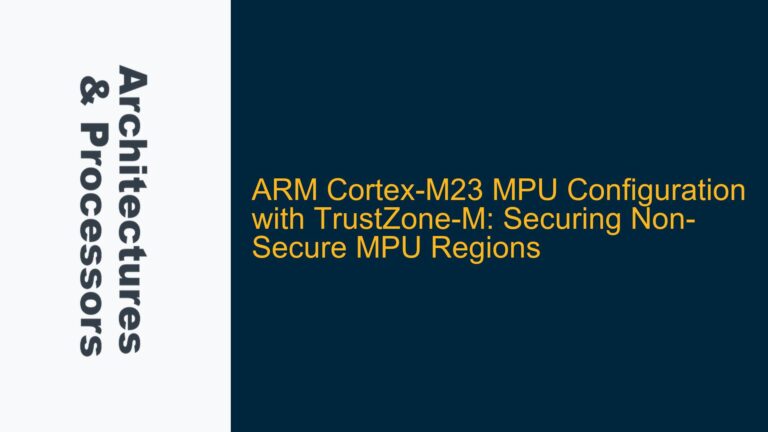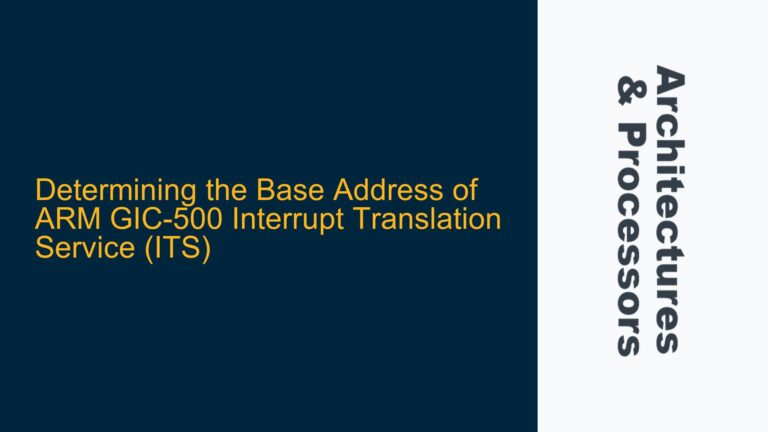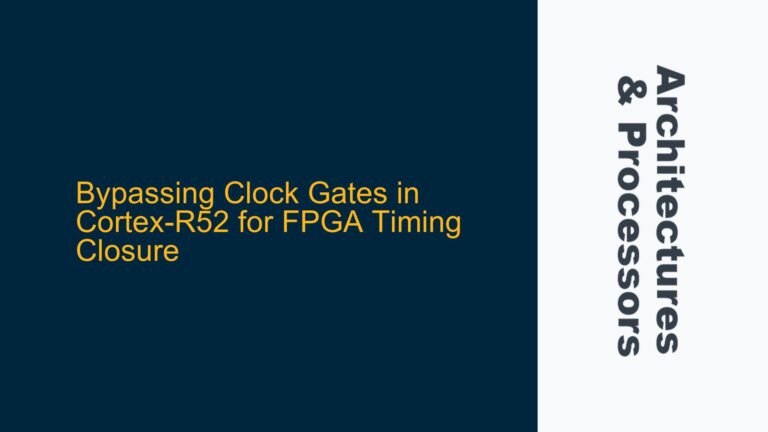ARM Cortex-M55 PMU Cycle Counter Returning Zero During Code Execution
The Performance Monitoring Unit (PMU) in the ARM Cortex-M55 processor is a critical tool for measuring CPU cycles during code execution. However, a common issue arises when the PMU cycle counter returns zero, even though the code compiles and runs without errors. This problem can stem from misconfigurations, improper initialization, or subtle hardware-software interaction issues. Understanding the root cause requires a deep dive into the PMU’s operation, the Cortex-M55 architecture, and the specific implementation details of the code being measured.
The PMU cycle counter is a hardware feature that counts the number of CPU cycles elapsed during a specific operation. When the counter returns zero, it indicates that either the counter is not incrementing or the measurement setup is flawed. This issue is particularly problematic for developers relying on cycle-accurate profiling to optimize performance-critical code. The following sections will explore the possible causes and provide detailed troubleshooting steps to resolve the issue.
Misconfigured PMU Registers and Improper Initialization Sequence
One of the primary reasons the PMU cycle counter returns zero is improper configuration of the PMU registers. The ARM Cortex-M55 PMU has several control registers that must be set up correctly before the cycle counter can function. These include the Performance Monitor Control Register (PMCR), the Cycle Counter Register (PMCCNTR), and the Event Counter Enable Register (PMCNTENSET). If any of these registers are misconfigured, the cycle counter will not increment.
The PMCR register controls the overall operation of the PMU, including enabling the cycle counter. The PMCCNTR register is the actual cycle counter that increments with each CPU cycle. The PMCNTENSET register enables specific counters, including the cycle counter. If the PMCR is not configured to enable the cycle counter, or if the PMCNTENSET register does not enable the cycle counter, the PMCCNTR will remain at zero.
Another potential cause is an improper initialization sequence. The PMU must be initialized in a specific order to ensure that all registers are configured correctly. For example, the PMCR must be configured before enabling the cycle counter in the PMCNTENSET register. If the initialization sequence is not followed, the cycle counter may not start counting.
Additionally, the Cortex-M55 PMU may require specific memory barriers or synchronization instructions to ensure that the register configurations take effect. Without these barriers, the processor may not recognize the changes to the PMU registers, leading to a non-functional cycle counter.
Debugging PMU Configuration and Implementing Correct Initialization
To resolve the issue of the PMU cycle counter returning zero, a systematic approach to debugging and correcting the PMU configuration is required. The following steps outline the process for identifying and fixing the problem.
Step 1: Verify PMU Register Configuration
The first step is to verify that the PMU registers are configured correctly. This involves checking the values of the PMCR, PMCCNTR, and PMCNTENSET registers. The PMCR should have the cycle counter enable bit set, and the PMCNTENSET register should have the cycle counter enabled. If these bits are not set, the cycle counter will not increment.
Step 2: Check Initialization Sequence
The next step is to ensure that the PMU initialization sequence is correct. The PMCR should be configured before enabling the cycle counter in the PMCNTENSET register. If the sequence is incorrect, the cycle counter may not start counting. Review the code to ensure that the initialization sequence follows the recommended order.
Step 3: Insert Memory Barriers
Memory barriers or synchronization instructions may be required to ensure that the PMU register configurations take effect. Insert the appropriate memory barriers after configuring the PMU registers to ensure that the processor recognizes the changes. This is particularly important in multi-core or multi-threaded environments where memory consistency is critical.
Step 4: Validate PMU Operation
After correcting the PMU configuration and initialization sequence, validate the PMU operation by running a simple test case. Measure the cycle count for a known operation, such as a loop with a fixed number of iterations, and verify that the cycle counter increments as expected. If the cycle counter still returns zero, further debugging may be required.
Step 5: Review Tarmac Logs
If the cycle counter continues to return zero, review the Tarmac logs to ensure that the PMU registers are being accessed and configured correctly. The Tarmac logs provide a detailed record of the processor’s execution, including register accesses and memory operations. Use the logs to identify any discrepancies in the PMU configuration or initialization sequence.
Step 6: Consult ARM Documentation
If the issue persists, consult the ARM Cortex-M55 Technical Reference Manual (TRM) and the CMSIS documentation for additional guidance. The TRM provides detailed information on the PMU registers and their configuration, while the CMSIS documentation includes examples and best practices for using the PMU in embedded applications.
By following these steps, developers can identify and resolve the issue of the PMU cycle counter returning zero. Proper configuration and initialization of the PMU are critical for accurate cycle counting and performance measurement in ARM Cortex-M55-based systems.






